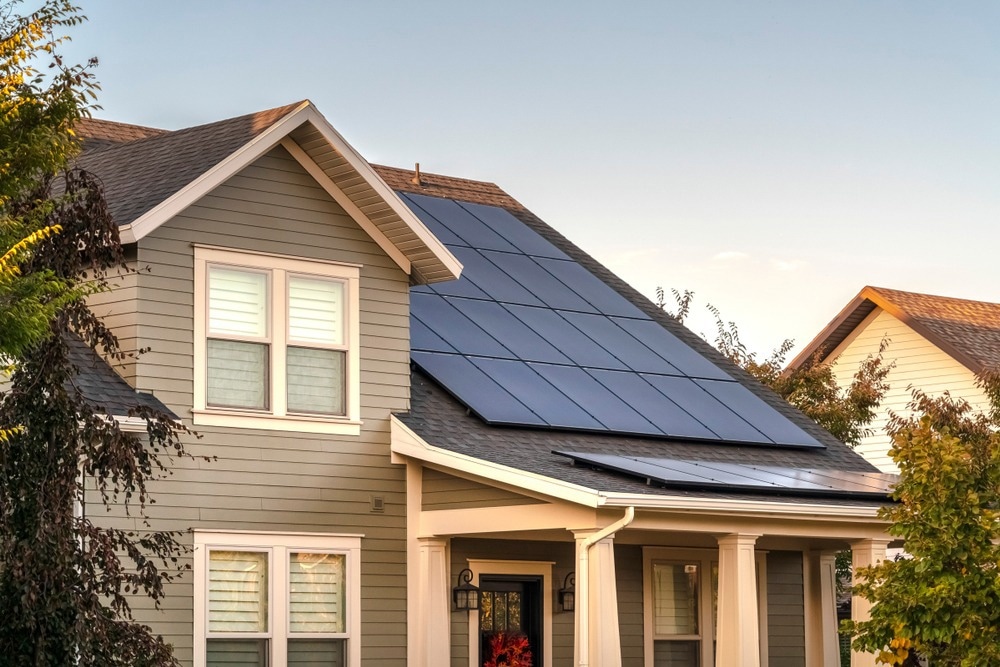In a recent literature review published in Heliyon, researchers thoroughly investigated the barriers hindering household solar photovoltaic (PV) adoption in South Africa. Their objective was to offer a comprehensive understanding beyond individual case studies.

Image Credit: Jason Finn/Shutterstock.com
Background
The transition to renewable energy sources is a global priority, driven by concerns over climate change and energy security. Among the various renewable energy technologies, PV technology, which converts sunlight directly into electricity, has emerged as a promising solution. Solar PV systems are a rapidly growing renewable energy technology driven by decreasing prices, increasing returns on investment, and growing awareness of environmental sustainability.
Technology offers a clean, reliable, cost-effective energy source with low maintenance requirements and a long lifespan. The environmental benefits of solar PV adoption are significant, primarily stemming from reducing carbon emissions associated with fossil fuel-based energy production.
Solar PV systems can also help reduce dependence on traditional energy sources, enhance energy security, and create new employment opportunities. However, despite its potential, the adoption of solar PV systems, particularly at the household level, remains low in many regions, including South Africa.
About the Article
In this comprehensive scoping review, the authors aimed to systematically identify and analyze the various barriers to adopting household solar PV systems in South Africa. To ensure the highest thoroughness and rigor, they followed the reporting standards for the systematic evidence syntheses (ROSES) framework, which is widely recognized and respected in the academic community.
The search for relevant peer-reviewed articles, book chapters, conference papers, research papers, and reports published between 2000 and 2023 was conducted on three major databases: Scopus, Web of Science, and Google Scholar.
After an exhaustive literature search, the researchers identified 857 papers potentially relevant to their research question. These articles were screened based on their titles, abstracts, and full-text content, and the data was extracted using a standardized form. After a thorough and rigorous selection process, 18 high-quality articles were included in the final analysis.
Significance
The study identified five key categories of barriers hindering PV adoption among South African households:
- Financial challenges: The significant upfront costs of solar PV systems and limited financing options, especially for low-income households, were identified as major obstacles. Studies indicated that many households perceived solar PV as an expensive investment with slow returns.
- Personal obstacles: A significant barrier was the lack of knowledge and skills to operate and maintain solar PV systems. Dissatisfaction with the quality and output of solar energy also contributed to a reluctance to adopt the technology.
- Institutional hurdles: Limited policies and incentives to support PV systems, along with insufficient support from local municipalities and the national utility, Eskom, were noted. The extension of the conventional electricity grid into targeted solar PV areas slowed adoption.
- Technical difficulties: Challenges such as the unavailability of spare parts and a shortage of technical expertise for installation and maintenance lead to frequent system breakdowns and household dissatisfaction.
- Social constraints: Concerns regarding theft of solar PV components, particularly in high-crime areas, discouraged investment in technology for some households.
Applications
The review underscored the importance of a multifaceted approach addressing barriers to solar PV adoption in South Africa's energy transition. Key strategies included:
- Addressing financial challenges: Introduce incentives and subsidies to alleviate upfront costs, facilitate access to affordable financing options, and enable low-income households to adopt solar PV.
- Enhancing personal capacity: Implement public awareness campaigns and provide training to educate households on the benefits and maintenance of solar PV systems, empowering them to operate effectively.
- Strengthening institutional support: Develop policies and regulations that incentivize solar PV adoption, ensure stakeholder coordination, and create an enabling environment for adoption.
- Addressing technical challenges: Invest in local solar PV manufacturing to improve spare parts availability, promote security features to deter theft, and enhance technical expertise accessibility.
- Fostering equitable transitions: Design policies targeting low-income households, ensure equitable benefit distribution, and conduct research to tailor interventions based on income group-specific limitations.
Conclusion
Overall, the review provided a comprehensive understanding of household solar PV adoption challenges in South Africa. Future work should compare perceived and objective barriers and assess their impact across different income groups. This would provide a more nuanced understanding of the challenges and inform the development of targeted interventions to promote equitable solar PV systems in South Africa.
Disclaimer: The views expressed here are those of the author expressed in their private capacity and do not necessarily represent the views of AZoM.com Limited T/A AZoNetwork the owner and operator of this website. This disclaimer forms part of the Terms and conditions of use of this website.
Source:
Mutumbi, Uzziah., Thondhlana, G., Ruwanza, S. Adoption of residential rooftop solar PV systems in South Africa: A scoping review of barriers. Heliyon, 2024, 10, e30937. https://doi.org/10.1016/j.heliyon.2024.e30937